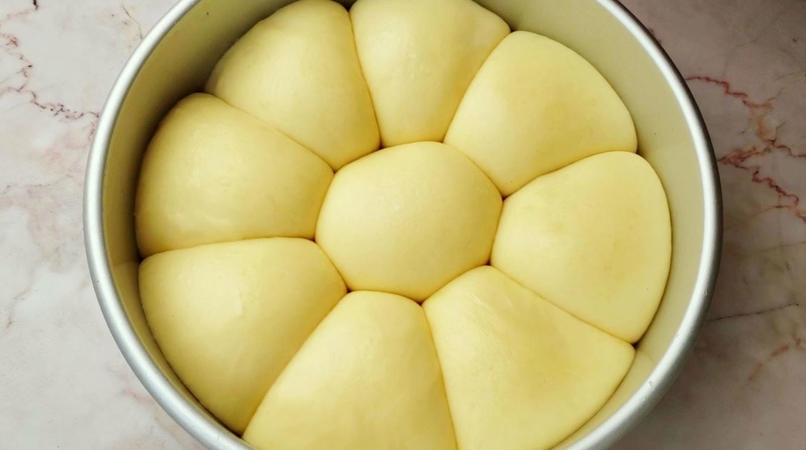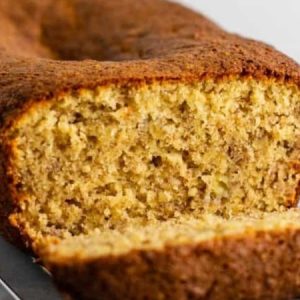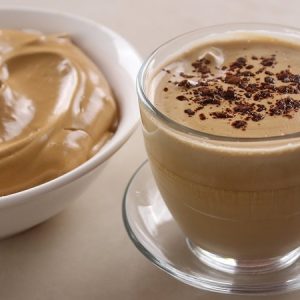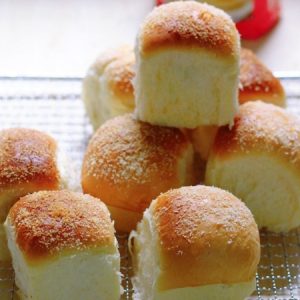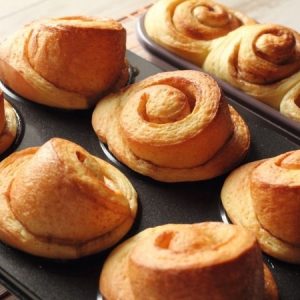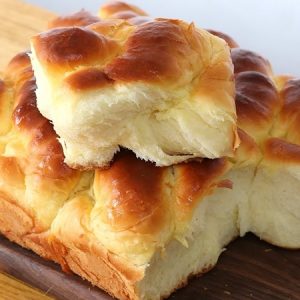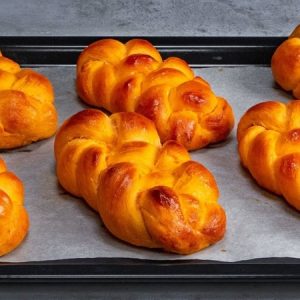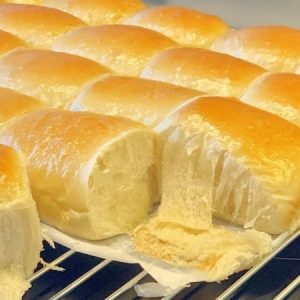This bread is super soft, fluffy with a wonderful milky smell that can be sensed even from the moment the dough is kneaded. You can never go wrong with this bread recipe even if it is the first time you are making it. In a bowl, add in flour, milk powder, sugar, and salt then with a wire whisk, whisk those ingredients, add the instant yeast then whisk again. Make a well at the center of the dry ingredients then add in an egg, whipped cream and milk then with a spatula, bring everything together until the dough is formed.
You can do this by hand or in a stand mixer. Cover the dough with a plastic wrap and let it sit in a warm place for about 20 minutes, Lightly flour your work surface then start kneading the dough, push the dough away from you with the palm of your hands, fold it back then push it again. This kneading technique helps to develop and strengthen the gluten in the dough.
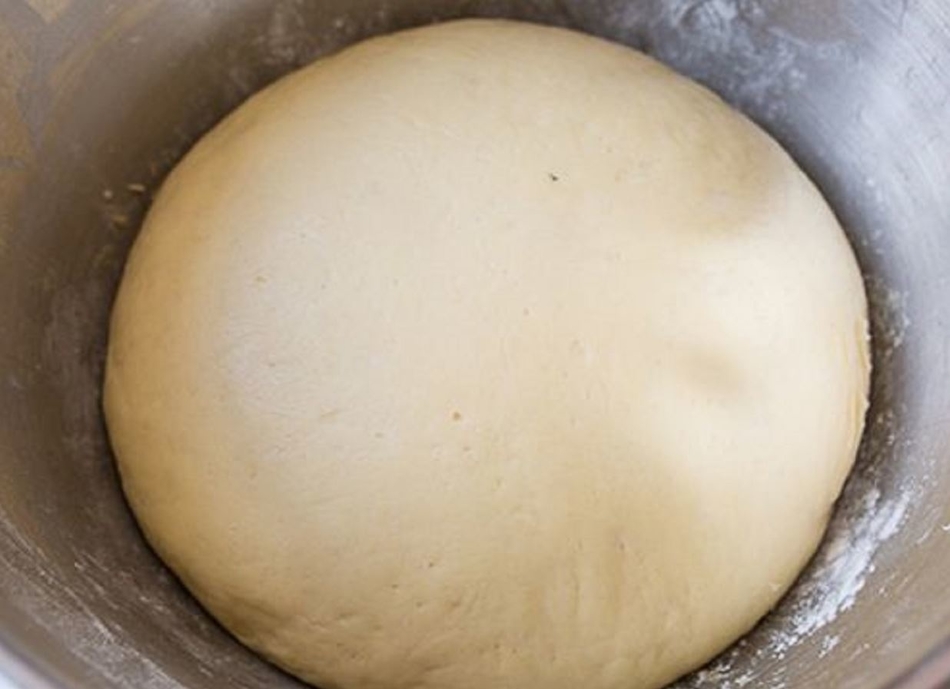
The first three to four minutes, the dough might be very sticky but as you continue, the dough will start to get soft and elastic. At the ends the dough will be quite tacky but not sticky when you touch it with your fingers, you may feel its a little sticky but when you lift your fingers up, it won’t stick. Oil a clean bowl then place the dough in and cover with a plastic wrap or a damp towel then let it rise for about an hour.
Divide the dough into equal portions then prepare your baking pan by greasing it with butter then flatten the dough then roll it up and flatten it again then roll it in the final shape and place it into the prepared bread pan. Once all the dough is in the pan, cover the pan and let the dough proof again. Preheat your oven to 340 degrees Fahrenheit.
For the egg wash, mix eggwash with milk then lightly brush the bread dough with the egg wash. Bake for 30 to 40 minutes until golden brown, if your bread starts to brown too early, cover the top with aluminum foil to prevent it from turning very brown on top. Once baked, let the bread cool for around 15 minutes, this bread can be eaten warm.
Ingredients;
- 540 gram (4 cups plus 2 Tbsp) bread flour
- 60 gram (1/2 cup) cake flour
- 10 gram (1 Tbsp) instant yeast
- 30 gram (3-1/2 Tbsp) dried milk powder
- 80 gram (1/2 cup minus 1-1/2 Tbsp) caster sugar
- 1.5 teaspoon (8 gram) salt
- 1 egg medium size (50 gram, excluding shell)
- 250 ml (1 cup plus 2 tsp) milk
- 150 ml (1/2 cup plus 2 Tbsp) whipping cream
Instructions;
- Warm-up milk to about 35 – 40°C/ 95 – 105°F ideally (must not be any hotter than that, it could kill or deteriorate the yeast’s activeness).
- Add 5 gram/ 1 tsp sugar and the entire amount of yeast to the milk, stir gently. After 5-10 mins, the yeast will have absorbed the liquid to activate and begin to rise to the surface
- In another bowl, combine the egg and whipping cream. Add the yeast and milk mixture, mix well together.
- Slowly transfer the egg and milk mixture into the flour bowl and combine well with a spoon. After all the ingredients have come together, you should get a lumpy mixture.
- Cover the dough with a damp cloth or plastic wrap and set aside for 20-30 mins. This step’s purpose is to enable the dough to absorb the moisture and build some initial gluten chains, which will mitigate the dough’s stickiness, making it easier to knead.
- Transfer the dough to a lightly floured work surface and knead the dough until it becomes smooth and elastic, and no longer sticks to your hands
- Transfer the whole mixture into the mixing bowl, start at low speed then gradually raise the speed to medium then mix for 12-15 mins until the dough becomes smooth and elastic.
- Use a big bowl, grease the inside with a thin layer of oil then turn over the dough inside the bowl so that the oil evenly covers the entire dough surface.
- Cover the bowl with a damp cloth or plastic wrap. Let proof until the dough has doubled in size.
- Shape your bread into a large sandwich loaf, or divide the dough into smaller pieces and roll them up into bread rolls.
- Bake at 170 – 175°C/ 338 – 350°F for approximately 30 – 40 mins until the top is dark golden brown.
- If the bread turns dark too quickly, cover the top with a piece of aluminum foil to avoid the bread getting burned.
- Don’t overbake the bread because it’ll make the bread dry with a thick crust.

